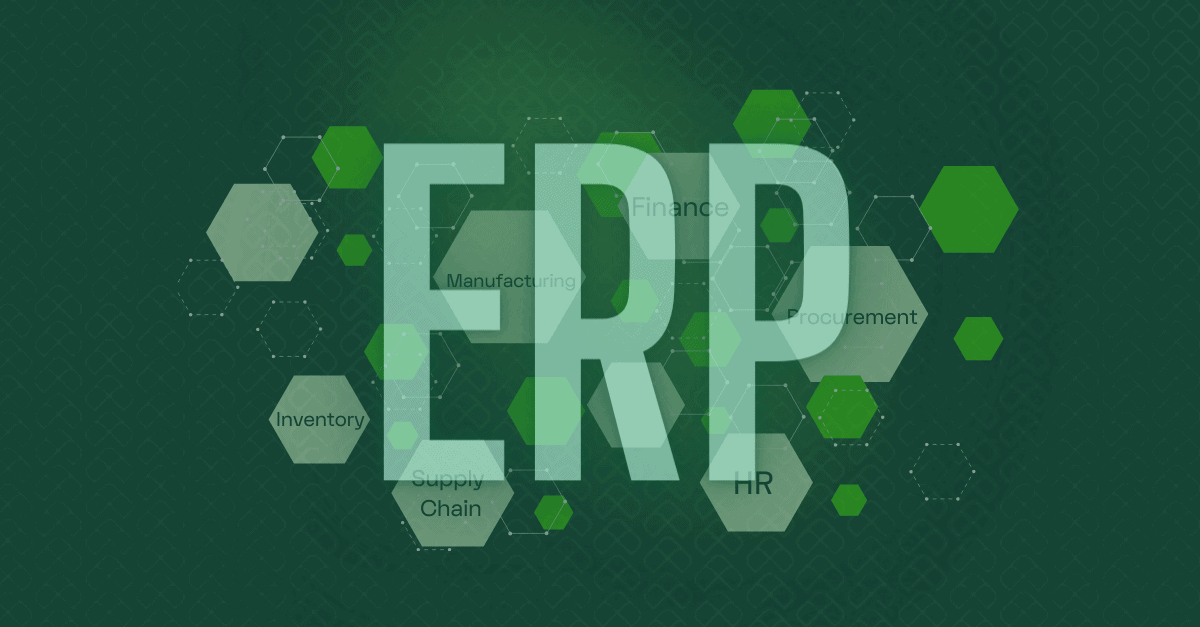Automating revenue recognition is all about using software and technology to make identifying, recording, and reporting revenue transactions much easier. With automation, companies can save a ton of time and effort while ensuring their financial reports are accurate and comply with industry regulations.
The thing is, revenue recognition has a significant impact on businesses. It determines when and how they should recognize revenue on financial statements, directly affecting budgeting, investment, and performance assessment.
If your company is thinking of automating revenue recognition, knowing the specifics is important. We’ll provide some helpful best practices and actionable tips to get you started!
What Is Revenue Recognition Automation?
A good place to begin is by more fully exploring the concept of revenue recognition. Essentially, revenue recognition is an accounting principle that dictates when and how a company should recognize revenue from its sales or services. It’s based on two fundamental concepts: revenue realization and matching.
In simple terms, revenue realization is when a sale of a product or service is converted into real revenue. In other words, it means recognizing revenue when it is earned, generally when goods are delivered or services are performed. Matching, meanwhile, ensures that all associated expenses are recognized in the same period as the revenue they help generate.
Certain limitations and challenges often arise when a company’s revenue recognition processes are performed manually. Right off the bat, the potential for errors amid all the calculations rises significantly due to the many complexities. Moreover, it can be difficult to comply with all the accounting standards and regulatory requirements, drastically increasing the risk of financial misstatements and audit issues.
Thankfully, automation can help mitigate these challenges. Revenue recognition automation refers to using technology and software solutions to streamline and optimize the complex process of recognizing revenue within an organization.
It enables companies to improve their financial reporting and decision-making while reducing the likelihood of errors and compliance issues. Automating one’s revenue recognition process typically involves using advanced, rules-based algorithms and data analytics to identify the correct timing and revenue amounts, aligning them with underlying business activities.
Why Businesses Need to Automate Revenue Recognition
As businesses grow and expand, managing revenue recognition becomes increasingly complex. Manual processes are often time-consuming, error-prone, and can result in regulatory compliance issues. Let’s talk more about why organizations should consider implementing revenue recognition automation.
Revenue Compliance Complexities
For one, while there are occasional instances when revenue recognition is relatively straightforward, companies must contend with many variables and complexities in most cases. Staying compliant with ASC 606, an accounting standard introduced by the Financial Accounting Standards Board (FASB) in 2014, can quickly become quite burdensome for most organizations.
The many intricacies of revenue recognition compliance, particularly those involving the Standalone Selling Price (SSP), underscore the need for companies to embrace automation in their revenue recognition processes. SSP determinations are often complicated, necessitating numerous calculations and extensive data analysis to allocate revenue accurately across multiple performance obligations. Manual approaches are prone to errors and can consume valuable time and resources.
Diverse Revenue Models
Many different business models exist, and some complicate revenue recognition more than others. In the software-as-a-service (SaaS) industry, companies frequently use more than one revenue model and offer varying payment terms to their customers (sometimes based on volume or usage). The subscription business model is popular; others operate on a consumption/usage or even a hybrid model.
Some of these business models make it more difficult to recognize revenue because of the need to track customer usage or payments that span many accounting periods. While not all automated revenue recognition software can accommodate usage, some—like RightRev—do.
Inefficiencies and Costs of Manual Processes
Simply put, automating revenue recognition is more efficient and cost-effective than doing it manually. When it’s done by hand, more mistakes occur, it takes much longer to find and fix them (we’re talking weeks, even months), it costs more (because the company needs to hire people to handle these manual functions), there is less visibility and real-time reporting, and revenue forecasting tends to be less accurate (it’s harder to gain insights into future payments).
Accounting teams can move much quicker and work more efficiently using automated revenue recognition software. Automation streamlines the whole process, helping to minimize the risk of non-compliance. By automating revenue recognition, companies can improve their accuracy, stay compliant, and enhance operational efficiency.
“There’s just no way, no matter how much headcount you have, to eliminate the risk of human error without fully automating your quote-to-revenue processes. I can’t advise a customer of mine to implement a solution that will be half manual or to simply “hire more” to deal with their revenue complexities – I know that will only result in increased risk and costs for them. Instead, I recommend a solution like RightRev, which I know is robust enough to fully automate the most complex contracts and revenue rules.”
– Jenn Meehan, Chief Growth Officer, Neocol
Benefits of Automated Revenue Recognition
As discussed above, when revenue recognition is performed manually, it’s often confusing, monotonous, and full of inefficiencies. Thankfully, companies have the option to automate it. Let’s jump in and discuss the many benefits of adopting revenue recognition automation.
ASC 606 Compliance
When a business automates its revenue recognition processes, the software will apply standardized rules and algorithms to its financial data, reducing the risk of errors and inconsistencies (making it easier to stay compliant). Automation also enables real-time tracking and auditing of revenue transactions so revenue is recognized appropriately, aligns with contractual terms, and stays in accordance with the specific requirements of ASC 606 and IFRS 15. Ultimately, this helps with ASC 606 compliance and improves financial reporting transparency and reliability.
Increased Accuracy and Consistency
While we all like to think we’re pretty perfect at whatever we do, the fact is that humans make mistakes. When it comes to revenue recognition, which is tedious, time-consuming, and difficult to understand, there’s an even bigger chance for errors. Automating revenue recognition eliminates these mistakes, ensures accuracy, and mitigates compliance risk.
Strategic Enablement
Automating in this area will free up a company’s accounting team—valuable and knowledgeable folks who want to work on strategic initiatives and projects that drive growth. What they don’t want to do is spend all their time sorting through revenue contracts and working in the middle of a million spreadsheets, handling tasks that can and should be done automatically instead.
Time and Cost Savings (Reduced Manual Work)
Then there’s the clear advantage of significant time and cost savings when an organization automates its revenue recognition processes. No matter how hard a company’s finance team works, some revenue recognition tasks will still take hours because of their complexity. An automated system will have the same tasks done in no time—and error-free, too!
Revenue Insights, Analysis, and Decision-Making
Another benefit of automation is its real-time data insights, analytics, and reporting. While some of this information is available when revenue recognition is carried out manually, it’s not nearly as comprehensive or generated as quickly. Revenue recognition automation software offers timely and accurate data that informs educated financial decision-making.
Scalability
Finally, as a company grows, automated revenue recognition processes will grow in tandem without making additional hires. This isn’t the case when a business handles its revenue recognition manually; to scale, it must find and bring on additional people to handle all those tedious accounting tasks. Revenue recognition automation simplifies scaling—in fact, it supports its growth.
Revenue Recognition Automation Best Practices
While it may sound intimidating initially, switching to automated revenue recognition can ultimately be a positive and worthwhile investment for your business. Really, if you think about it, all the costs associated with the risk of manual-induced errors and non-compliance far outweigh the cost of an automated solution that ensures accuracy and compliance. The following best practices will certainly help you out.
Understand the Customer’s Purchase Agreement and Contractual Obligations
It’s absolutely critical that a business thoroughly understand all its agreements and sales contracts with customers. As a reminder, purchase agreements are legally binding and dictate the terms of the sale, including the payment and delivery details, quantity and description of the goods or services, warranties/guarantees, and any refund or return conditions.
Establishing a standardized contracting procedure is beneficial, especially if your business employs a complex pricing model. And as a rule of thumb, be sure to know the customer’s contractual obligations in advance.
Systematize All Customer Contracts, Accounts Receivable, and Any Changes in Terms
It’s also advantageous for a company to establish a system that tracks revenue contracts, customer information, and usage details. Doing so will make it easier to stay on top of all contract terms and modifications, discounts, deferred revenue, performance obligations, revenue allocations, billing information, and more—all the details that provide comprehensive and real-time visibility into the business’s financial transactions and contractual obligations. This will reduce the risk of revenue leakage and compliance issues and produce accurate data for financial reporting and decision-making.
Obtain Visibility into Future Revenue From Customers
Forecasting can be a real challenge, but it is absolutely necessary to accurately recognize revenue. How can organizations obtain visibility into future revenue?
Consider using an automated revenue recognition service that offers revenue forecasting for recognized, planned, and unplanned revenue. RightRev, for instance, even provides its clients with revenue waterfall reports that display booked revenue and projected deferred revenue. Achieving visibility in this area makes it much easier for companies to recognize revenue properly.
Ensure Processes and Procedures Comply With the Latest Accounting Standards
This can’t be emphasized enough! Regulations and accounting standards (we’re talking about ASC 606, international financial reporting standards, and generally accepted accounting principles) are critical to comply with. Companies should regularly evaluate their revenue recognition policies and procedures to ensure they are up-to-date and compliant with every revenue recognition standard.
In addition, it’s a great idea to identify your pain points ahead of time so you can look for a solution that solves all of your use cases.
Align With Upstream Data and Processes
Finally, it’s beneficial if a company’s back and front offices are on the same page as it works to build a streamlined automation process. If both departments are in alignment and understand each other’s revenue management needs, it will be much easier for them to achieve seamless automation of revenue recognition. Including all appropriate upstream and downstream stakeholders in revenue automation conversations will drastically improve the revenue recognition process for maximum efficiency and accuracy
Revenue Recognition Automation Is the Way to Go
Sometimes, it’s tempting to keep things as they are—to maintain the status quo. But when it comes to revenue recognition, trust us, making the switch from manual to automated will be tremendously worth any required initial effort.
We’re talking about a process that takes even the best accounting teams hours and hours of tedious work every week or month, pulling them away from other more valuable and growth-driven tasks. Perhaps even more than that is also the very real risk of non-compliance. With ever-changing regulatory requirements and accounting standards, companies must do everything possible to stay compliant and prevent potential legal, reputational, and financial harm.
How RightRev Can Help
Don’t despair—RightRev to the rescue! Your company can count on the team of experts at RightRev to fully understand and wrangle all the complexities and nuances in revenue recognition due to varying business models, multiple offerings, frequent contract modifications, and so on.
RightRev’s automated revenue recognition software can expertly handle anything ASC 606 or IFRS 15 throws at it, easily maintaining compliance and ensuring accuracy and consistency for all financial reporting and forecasting. If your business is ready to switch from an error-prone manual process to a far superior automated revenue recognition software, request a demo today and experience the power of revenue recognition automation.




